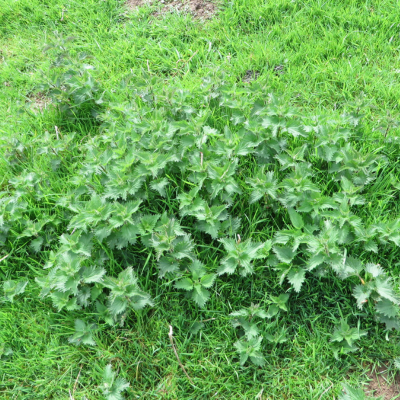Common nettle is a perennial plant. It is the most prevalent species in established pasture.
Nettles

What is a common nettle?
Common nettle (Urtica dioica) propagates mainly from extensive, creeping rooting stolons. The more often the shoots above ground are cut, the more vigorous the new growth is. Germination occurs from the soil surface, even at low temperatures, when the grass sward becomes open or if the soil is disturbed.

Biology
Common nettle is a perennial plant.
New plants can develop from root fragments so chopping them up does no more than multiply the problem.
How can I identify a common nettle?
- Common nettles can grow up to 1m tall, they have hairy stems and oval leaves.
- Plants flower from June to October and have green/white flowers.
- They can form dense beds, which spread out across the field.
For optimal spraying see pictures below.

Closer look at the leaves

Patch of nettles

Flowering nettle
Why are common nettles a problem?
- They make pasture unpalatable and reduce the grazing area for stock.
- Grass yield is lost by competition from nettles for nutrients, light and moisture, but also from stock refusing to graze close to nettles.
- The quality of the conserved grass (hay/silage) is affected if nettles are present, as the stock will reject it.
How do I control common nettle?
Nettles are best controlled when young and actively growing (150-250mm high).
Cutting clumps up to three times per year over successive years, with the first cut before flowering, but multiple passes over the same part of the field will cause damage to the soil structure.
Forefront® T, Pas®·Tor® Agronomy Pack and Grazon® Pro (for spot treatment which is usually when the weeds cover an area of <5% of the field) will all control nettles.
Forefront T Herbicide
Forefront® T is the best herbicide treatment for long-term control of ragwort in grassland.
Grazon Pro Herbicide
Grazon® Pro provides excellent control of broad-leaved dock, curled dock, creeping thistle, spear thistle and common nettle.
Pas·Tor Agronomy Pack
Pas·Tor Agronomy Pack delivers long-lasting perennial weed control including docks, thistles and nettles.